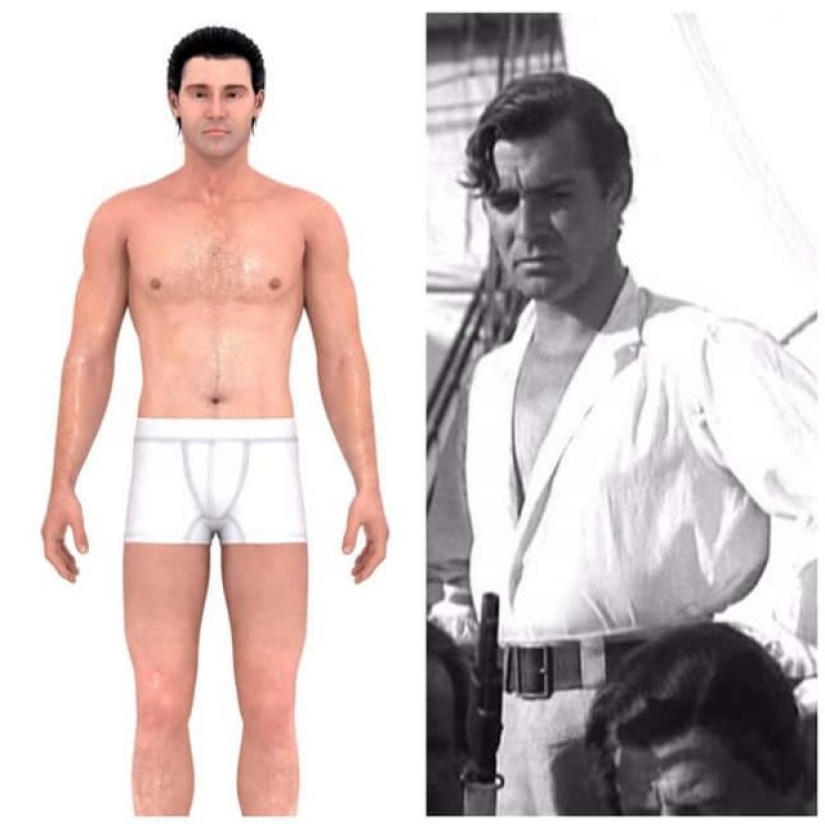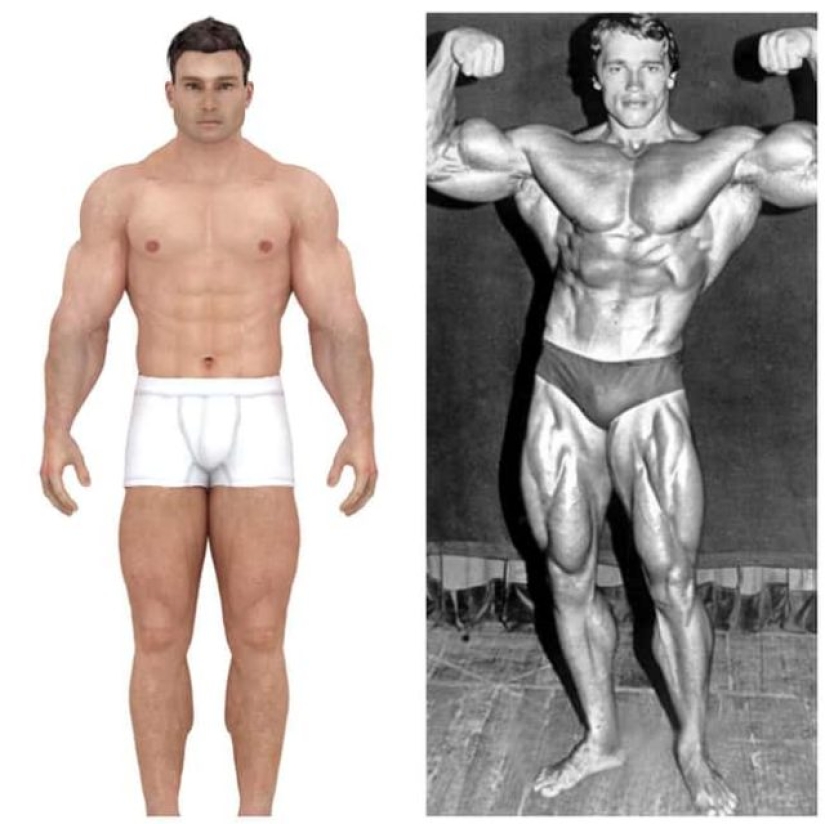Here's how Western standards of men's beauty developed in the twentieth century
Categories: Beauty | History | Lifestyle | People | Photo project | Society | World
By Vika https://pictolic.com/article/heres-how-western-standards-of-mens-beauty-developed-in-the-twentieth-century.htmlIdeal types of bodies often remind of fashion trends: they change almost every decade. Although the means of mass information, as a rule, are focused on the female body, the standards of masculine beauty have also strongly changed over the course of the 20th century. It is generally known that girls and women are forced to have an "ideal body", but how many societies think about the pressure which men face? During the twentieth century, men also struggled with the standards of beauty, which were hard to come by. After all, current events, Hollywood movies, wars, and what was considered the ideal job, influenced the way men were supposed to look.
In this review of the types of male body composition for the extension of the whole history, the most desirable drawings of different decades are emphasized, as well as the reasons that lie at the heart of these desires. But at the end of the day, it is clear one thing: beauty will always be in the eyes of the beholder. For this purpose, the photos here represent the general trends in the ideals of male beauty; naturally, not all identities or required images are represented.
7 PHOTOS

1. 1870s: Massive bodies symbolize wealth.
To be complete in the late 1800s and early 1900s meant something completely different than today. In the epoch, when food products were not always easily accessible, products with a higher content of fat were more expensive. In addition to the fact that the man boasted that he has the means to eat well, the waist circumference also pointed out that the guy does not need to perform physical work - he either had a good job, he had a good job to work.

2. 1920s: Hollywood movie star begins to lose weight.
In the 1920s, the developing film industry required a male film star. In Hollywood, it was decided that the cameras add weight to the stars, and, in fact, to be fatter is no longer fashionable, male actors and women asked to lose weight. Men performed a lot of their own tricks, and it was not always easy. They had to be physically prepared for the exhausting days of work, so they were often very thin, but strong, with the fact that they could be called functional muscles. Approximately at the same time, Hollywood began to set the tone of beauty ideals, and "slim, bright figure" quickly became very fashionable for men.

3. 1930s and 40s: a strong hero.
When the 1930s came, Hollywood was fully dedicated to the "muscular mesomorph with a V-shape." Such people as Clark Gable (right in the photo) and Charles Atlas were considered ideal, with a strong upper body, but not too massive muscle.

4. 1950s: Elegant leader.
The ideal type of bodybuilding in the 1950s was strength and for a decade the rule of tall men with broad shoulders. The idea came to the fact that the tallest men possessed a more impressive appearance than the humble, and the majestic, powerful figure had a great significance for the advancement of the cruel world ahead of the cruel world.

5. 1960s and 70s: slim rocker.
The image of the body became less and less dependent on form and more about how men can use their bodies to express their ideas and beliefs. They did it with the help of clothes and hairstyles more than with the help of muscles, often following the example of many expressive and self-confident rock stars of that epoch.

6. 1980s: big muscles were needed.
The ideal type of bodybuilding in the 1980s was, apparently, the answer to the difficult economic times, as well as the "return to value" of President Ronald Reagan. In fashion, there were men with muscles, and not only with moderate muscular bodies, but also with massive muscles with sharp outlines. Bodybuilding became a popular occupation, and such men as Arnold Schwarzenegger became world-renowned athletes.

7. 1990s to today: the usual tightened body.
Then, as a massive mass came out of fashion, in the 90s appeared an image that became known as "ordinary". Ideally, there were no longer unattainable massive muscles, but more than an ordinary guy. The biceps and presses became the desired muscles, as well as the main elements of the legs and chest. The pinnacle of the ideal man of the 90s was Brad Pitt from the movie "Fight Club", eloquent and strong, but not too big. It is within reach, but it still shows that for this purpose some effort was required.
Keywords: Western standards | Beauty | Twentieth century | Ideal types of bodies | Men and women | People | Bodies
Post News ArticleRecent articles

Sometimes, when someone accidentally breaks a cup or plate, you can hear the phrase that it is "for luck". Sometimes at weddings, ...

Most American success stories are about how a person chose a goal and walked towards success despite obstacles. But there are also ...
Related articles

Sport has a positive effect not only on a person's health and well-being, but also on his self-esteem and mood in general! After ...

There are women, one glance at which captures the spirit and the heart begins to beat faster… To them he was Swedish actress ...

Beauty is a subjective concept. Each country has its own ideas about the beautiful. In Africa, fullness is considered beautiful, ...

It is impossible to imagine the New Year without citrus fruits, especially tangerines. And on other days it is difficult to refuse ...